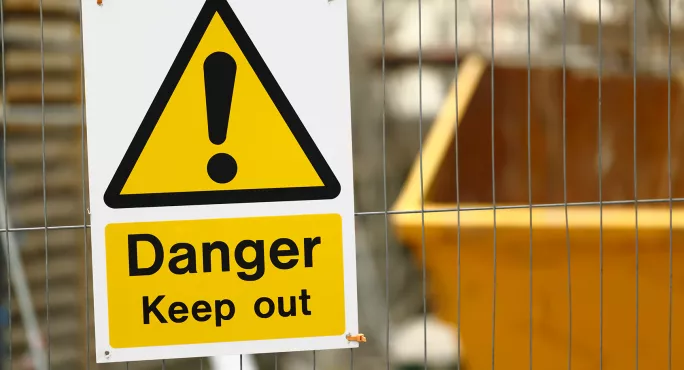There is a “real risk” over school safety, says the head of the National Audit Office (NAO), after it emerged that 65 school buildings have been identified so far as having been built with lightweight concrete, which is prone to failure.
Gareth Davies, comptroller and auditor general at the NAO, was speaking on BBC Radio 4‘s Today programme this morning after a report by the public spending watchdog identified that about 700,000 children in England attend schools requiring major repairs following years of underfunding.
It also highlights concerns over the use of reinforced autoclaved aerated concrete (RAAC), which is prone to failure in schools built between the 1950s and mid-1990s
Asked how many schools they identified where there was a real risk, such as someone being killed, Mr Davies said: “It’s important to say there are no cases the department is aware of of anything as extreme as that happening, but clearly the risk itself is very serious and, correctly, the department has classed the risk as ‘critical’ around that.
“It’s particularly focused on these lightweight concrete buildings, and there’s a similar issue in hospitals, actually, but in the case of schools, 65 of these schools have been positively identified. There’s a large number more that are still being investigated.
“Out of those 65, 24 have had urgent action taken immediately - including closure in some cases.
“So this isn’t a theoretical risk. It’s a real risk. And, clearly, it’s important that the department, and government as a whole, brings that down below ‘critical’ level, where it currently sits.”
Last year, it was revealed that the prospect of school buildings collapsing was flagged as a “worsening” risk in the Department for Education own’s annual report for 2021-22.
Reacting to the new NAO report, Labour shadow schools minister Stephen Morgan said: “Labour has repeatedly raised the risk to life that school buildings pose to children and staff but have been met with a wall of silence from the Conservative government.
“Children won’t receive a first-class education in second-rate buildings. It’s time for ministers to come clean and tell parents what they know about the state of school buildings and reassure them that children are being educated in buildings that are safe.”
Liberal Democrat education spokesperson Munira Wilson said: “Parents have a right to know that their child is safe at school. Yet this report shows that hundreds of thousands of children are learning in crumbling school buildings.
“To make matters worse, the government is flying blind without a clue about how many schools pose a danger to our children.”
A DfE statement on RAAC in schools said: “We have been communicating with schools about the potential risks of RAAC since 2018 when we first published a warning note with the Local Government Association.
“Since then, we have published guidance in identifying and managing RAAC and have asked all schools to share their knowledge of RAAC, its presence in their buildings, and how they are managing it. We are following up rigorously to ensure as complete a response as possible.”
The department said it has carried out more than 200 assessments where RAAC is suspected and is “on track to complete 600 assessments by autumn”.
A DfE spokesperson added: “It is the responsibility of those who run our schools - academy trusts, local authorities and voluntary-aided school bodies - who speak to their schools day-to-day to manage the maintenance of their schools and to alert us if there is a concern with a building.
“We will always provide support on a case-by-case basis if we are alerted to a serious safety issue by these responsible bodies.”




